The first presentation I attended at CES this year was from Nvidia. It set the tone with Nvidia ACE and a host of technologies that are creating a robotic future that is rapidly becoming our present.
Robotic fast-food restaurants are beginning to pop up already, and at CES this year, folks were showcasing and talking about the first big wave of robots coming from a variety of vendors, one of which is designed to compete with the coming Tesla robot.
What I continue to find fascinating is that this robotic wave was first presented at Dell Tech World. Since then, Dell has had one big robotic project, Concept Luna, that was incredibly compelling but has yet to make it out of the concept stage.
Let’s talk robots this week. Then, we’ll close with my Product of the Week, the new well-priced graphics card from Nvidia, the RTX 4070 Super.
Yarbo

(Images Credit: Yarbo)
I have a Yarbo, and it is impressive. It is a modular yard robot that can morph from an autonomous snow blower (the configuration I have) to an autonomous lawn care robot. It uses a gaming controller to map out the areas to be covered, has a decent-sized battery, and can handle most snow and lawn care tasks, including spreading liquid or granular pesticides or fertilizers.
Since it’s track-driven rather than wheel-driven, watching this little guy work is fascinating. It has a power docking station, so it’s always ready for the task at hand.
Ecovacs Deebot X2 Combo
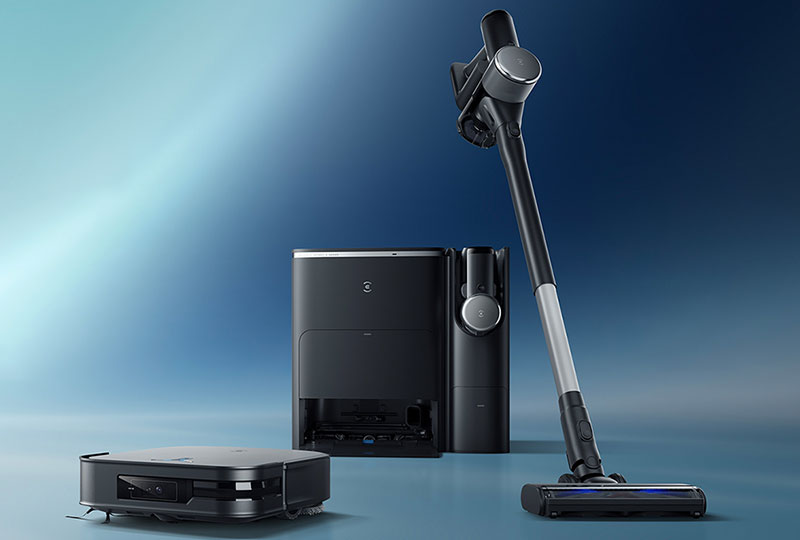
(Image Credit: Ecovacs)
The Ecovacs Deebot X2 is an unusual combination of a robotic vacuum and a handheld stick vacuum. What makes this interesting is that it has one of the most advanced AIs and a square design to get into corners better. The Deebot X2 integrates the regular vacuum functionality within the robot’s base and includes a hot water mopping function. Additionally, it features a base where the robot can empty its dirt bin and refill from.
The one at CES had a stick vacuum accessory to get to places, like stairs, where the robotic vacuum could not go. Priced at around $1,700, this vacuum isn’t cheap, but it looks far more capable than any robotic vacuum that I’ve used or tested so far.
Samsung Ballie
The Samsung Ballie was initially introduced back in 2020. Since then, it has been updated to do things like manage Samsung home appliances or project videos. This is one of many AI-driven mobile digital assistants that are expected over the next several years as the market explores just what people want in a mobile digital assistant.
I’m not sure I’d want this if I had a large dog that liked to play fetch, as I expect it would become a chew toy. As it buzzes around the house, it sends video updates on what it sees and helps with home activities like exercising. It learns from you over time and is one of the first early examples of how AI in the home will be coming to market.
Parkie
While Parkie appears to be designed for parking structures or lots, I think this thing would be really handy for those of us with very tight garages. It looks like a big skateboard that goes under the car, lifts it, then drives the vehicle to an open space, leaving it there like a robotic parking attendant.
Using Level 4 autonomous driving technology — which seems to be overkill given this doesn’t need to drive around town or on freeways — could be a great way to reduce car damage in tight places. I wonder if you could get it to work with an enclosed car trailer, as I’ve seen a lot of show cars damaged when being put on or taken off a trailer. It’s a cool robot I could use in my own garage.
Shadecraft Sunflower
I want the Shadecraft Sunflower as it would solve a problem I have with the shade in my front yard. It’s a robotic umbrella that tracks the sun and adjusts the shade so you don’t get sunburned. Have you ever gone to sleep outside only to find the sun moved while you were sleeping, and now you have a massive sunburn? Shadecraft Sunflower could fix that.
It has a built-in entertainment system, so you can listen to music, podcasts, or books on tape while relaxing outside.
While this came out in 2018, it was highlighted at CES this year as one of their big success stories. I’m not sure how I missed it when it came out initially, but it is now on my summer wish list.
Mirokai Robot
The Mirokai Robot from the French company Enchanted Tools is arguably the most forward-looking robot that was at CES this year. This amazing robot balances itself on a ball, which allows it to move in three directions nearly instantly. It has arms to grasp things, a face that can show emotions and is about the size of a 12-year-old child.
Based on a cartoon character, this robot would be impressive in the home and can perform complex tasks. It looks like rolling art to me. It’s an outstanding, though undoubtedly wickedly expensive, offering from a company we’ll need to watch going forward because this robot was far more advanced than almost everything else I saw at CES.
Moxie Robot
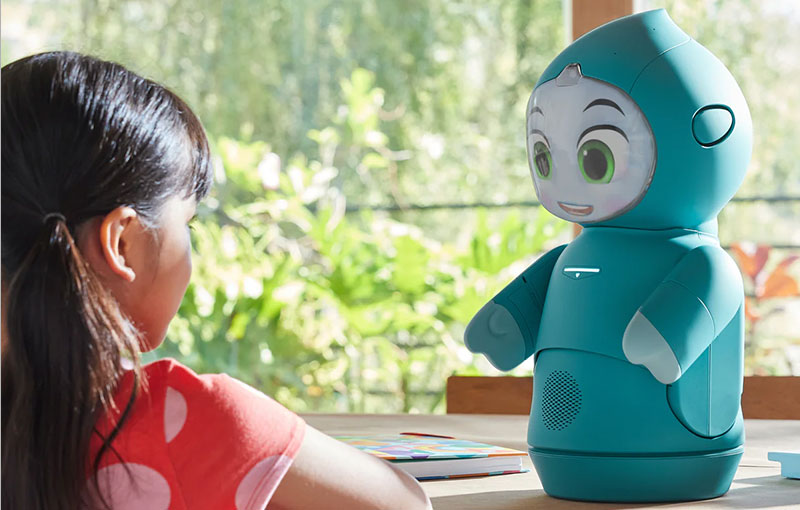
(Image Credit: Moxie Robot)
The Moxie Robot is specifically designed for children to help with home learning. It represents a growing class of AI tools to supplement teachers’ and parents’ interaction with kids. This robot would have been a critical tool during the pandemic to help kids learn how to interact better and reduce the number of near-feral kids that resulted from the extended pandemic shutdown.
It is designed to help kids regulate their emotions, build self-confidence, improve communication, develop relationship skills, think creatively, and problem-solve. Suddenly, I’m thinking I need one of these. It’s not a cheap date at $799, but it could be critical for families where both parents work and need something to impact their child’s growth and development positively.
Loona Companion Robot
The Loona companion robot is a robotic pet that uses generative AI to interact with its owner. Priced at around $400, this would be best for those who want something to keep them company without the responsibility of caring for something like a pet.
Backed by AWS, it has full 3D navigation and can respond to voice commands and interact with its users. Loona was a top seller last Christmas. It has a charging dock, so it is ready to go when you are. It is surprisingly cute, and I wonder how it would interact with living pets. You can use it to view your home remotely and check up on your kids and pets. It looks like a lot of fun.
LG Smart Home AI Agent
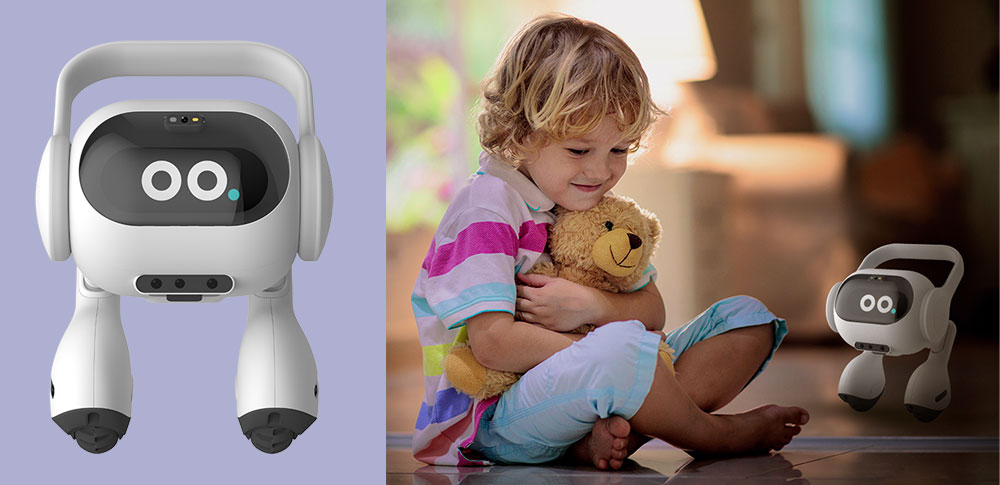
(Image Credit: LG)
The LG digital assistant robot doesn’t have a name yet (which seems kind of weird), but it is a two-legged robot that will work with LG appliances. It’s similar to Samsung’s Ballie but with a more robotic look.
It can patrol your home, allow for remote viewing of pets and kids, and use Qualcomm’s RB5 robotic chip for operations. This is part of LG’s “Zero Labor Home” effort, which promises to bring some amazing new home automation technologies to the world over the next few years.
Kepler Forerunner Series
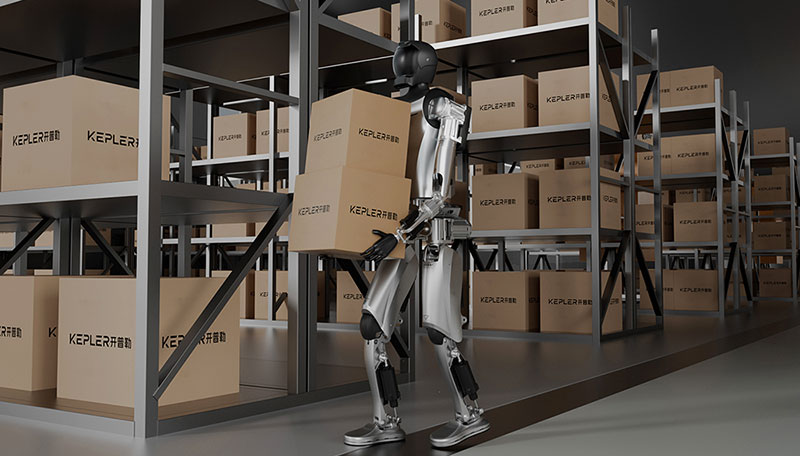
(Image Credit: Kepler)
The Kepler Forerunner series is what we usually think of when someone says “robot.” It is a human-sized, two-legged, humanoid robot that can do human-level tasks like carrying packages, reaching for things, and providing basic help around the home.
While this robot is mainly targeted at factory work, you could also see it used to help people who are disabled or elderly. I expect it would be extremely expensive, but its capabilities set a new bar for this class of humanoid robots.
With full human-like movement, including arms and hands, decent strength, and the ability to navigate stairs given its two-legged design, it’s one of the more impressive technology offerings at the show this year.
Matic Robot Floor Cleaner
The Matic robot floor cleaner is unique in that it can pick up lots of liquid, like when a child spills their milk on the floor. The device has a large repository for dirt and liquids, which should make it ideal for pets and kids who make messes when you aren’t home.
This Matic has one of the most advanced AI navigation systems, and it looks like it can handle dog poop without spreading it all over the floor — though I didn’t verify this. While it can’t go under furniture like other robot vacuums due to its size, for someone with pets or kids, this might be the best choice for robotic vacuuming and mopping.
Artly Barista Bot
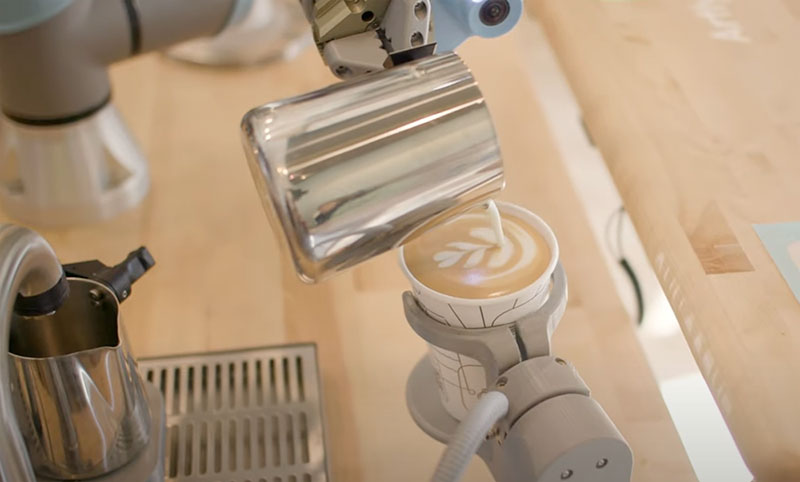
(Image Credit: Artly Coffee / YouTube)
The Artly barista bot may be coming to a Starbucks near you as it is an industrial-class robotic barista that can mimic what a human barista does, including the steamed milk design.
We are already seeing major robotics moves into food preparation primarily due to the continuing shortage of employees for these businesses, with some of the first fully robotic fast-food places already open. This robot highlights that you can create a robot that can do most repetitive tasks, like food prep, that humans do with greater consistency and higher overall quality. This is the future of fast food.
Wrapping Up
There were a ton of robots at CES this year, reminding me way too much of the Robopocalypse book, and almost movie, of a decade ago.
The event showcased a plethora of cool stuff, with great advancements in robotic vacuums and mobile digital assistants. Yet, this is just the beginning of the robotic revolution, which is increasingly supported by parts from companies like Nvidia and Qualcomm.
I expect we’ll be up to our ears in robots by mid-decade, and we’ll hope this ends better than in the Robopocalypse book.

Nvidia RTX 4070 Super

(Image Credit: Nvidia)
Much of AI development work is still done on GPUs. Last week, Nvidia announced one of its strongest GPU values, the RTX 4070 Super.
With significant performance increases over Nvidia’s prior efforts, this $599 list-price GPU should futureproof your desktop PC at a reasonable price. Yes, they also announced the RTX 4070 Ti Super and RTX 4080 Super, but these cards are likely overkill for most of you who just want some futureproofing and don’t necessarily need to be on the forefront.
This RTX 4070 has a significant performance boost over the old RTX 2070 and 3070 cards, making it a cost-effective upgrade if you are running one of those older cards — particularly the 2070, which is aging out.
To give an idea of the performance boost, it doubles the frame rates of the RTX 3090 card and can more than triple the frame rates of the old RTX 2070 card, depending on the game. This card anticipates the coming wave of AI games and tools, as well, and should provide a decent performance boost for those who want their desktop system on the performance curve for 2024.
The Nvidia RTX 4070 Super is a decent card at an affordable price. It’s available on Jan. 17, and it’s my Product of the Week.


